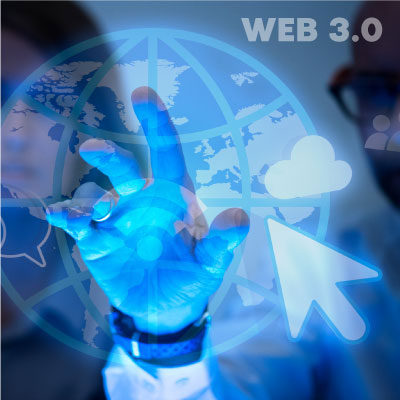Introduction
We all spend most of our time surfing the web but many of us are not aware of its types and what it offers us. Let’s look at the different types of web and what decentralized internet or web 3.0 is all about.
Web 3.0
Web 3.0 is the next generation of the internet which is not controlled by any single authority instead, it is being owned and controlled by the community or the members of the network. Web 3.0 will be powered by some of the technologies like AI, ML, and IoT.
What is decentralization?
The transfer of control of an activity or organization to several local offices or authorities rather than one single one.
How is this related to the web? Currently, most of the internet is owned by some group of individuals who have the entire authority in decision-making.
In a decentralized internet, the network will be owned by the members of the network and will be similar to peer-to-peer infrastructure.
Evolution of the web over the years.
Web 1.0 (1989 – 2004)
It was the first generation of the internet wherein the main focus was access to information. It provided access to a bunch of static web pages where the end-users consumed the content.
Example – reading news.
Web 2.0 (2004 – Present)
With the advancement in technologies like HTML, CSS, Javascript came the era of social networking, which enabled the end-user not only to view or consume content but create and interact with it as well. Posting blogs, videos, liking, and commenting on the same was possible because of web 2.0.
Web 3.0
This web has immense potential because of the new-gen tech that is being used in it. Technologies like Artificial Intelligence, Machine learning, Blockchain, etc.
Some of the features of web 3.0 are
- Decentralization
- Trustless and permissionless
- Connectivity and ubiquity
Now let’s look at the issues with centralized internet.
Firstly, the name itself has one issue that it is centralized. The current web in use is owned by some of the organizations. These are the organizations that have the majority of the user base ex. Google, Facebook, etc. All the data is being owned by these organizations which belong to the end-user.
Secondly, since it is being operated by a centralized authority, the type of content the end-user uploads is being censored.
For example – In many countries, posts and articles criticizing the government have been taken down. Hence, there is not much freedom of speech.
Lastly, it is also over-regulated, which is evident from the laws and regulations that have been put forward since the inception of web 2.0.
How Web 3.0 will solve these issues?
Web 3.0 uses blockchain technology which is basically a public database managed by the members of the network.
Blockchain is a digital ledger containing blocks. Each block in the chain contains data and a link to the previous block. This chain is duplicated for each individual on the network and when a new block is created it is added to the chain of each individual on the network. Hence Web 3.0 is called a decentralized internet as it is managed by the members of the network. Hence no censorship and regulations unlike web 2.0.
Applications built on blockchain.
Decentralized applications or dApps are applications that run on a blockchain. As mentioned earlier they are out of control of a single authority and operate without any human intervention. These apps can only run on blockchains that use smart contracts like Ethereum. Smart contracts are just like contracts in the real world, the only difference is that they are digital. In fact, smart contracts are programs that are run on the blockchain.
PanCakeSwap is a dApp that runs on the Binance smart chain and is one of the most popular decentralized exchanges in the world.
Conclusion
The decentralized web has a lot to offer from smart contracts to trustless mechanisms. It will give rights to the content creators and will help increase transparency over the network. dApps will power the network.
It is only a matter of time before we get to know how this technology is adopted and how it evolves over the coming years.

